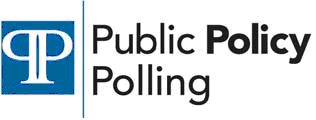They're missing the point though: the strength Obama derives from young voters isn't necessarily about the quantity of their vote. There's been a major shift toward the Democrats in that age category relative to 2004 that will have a strong impact on the race whether there's a disproportionate increase in turnout or not.
We've polled in six battleground states over the last week and asked respondents who they supported for President in 2004 and who they're supporting this year. There's been a 17 point average shift in a Democratic direction among voters under 30:
| State | 2004 18-29 | 2008 18-29 | Shift |
| | Kerry 54-44 | Obama 63-33 | D+20 |
| | Bush 44-40 | Obama 46-41 | D+9 |
| | Bush 42-31 | Obama 54-40 | D+25 |
| | Kerry 46-33 | Obama 59-37 | D+9 |
| | Kerry 48-35 | Obama 64-28 | D+23 |
| | Kerry 42-36 | Obama 56-34 | D+16 |
| Average | Kerry 44-39 | Obama 57-35 | D+17 |
So let's say that young voters again comprise 17% of the vote nationally, as they did in 2004. A 17 point gain with 17 percent of the electorate is a three point gain for Obama, enough to make up the margin by which the Republicans won the popular vote nationally right there. Add in your increase in turnout from black voters and the white voters of all ages who chose Bush in 2004 but are going for Obama this year and you have the equation for a strong Democratic victory.

Thank you very much for this glimpse. on 538.com some posters(including myself but I just mostly lurk there) were wondering how the youth turnout was coming along, and there was some concern that the youth vote won't respond in larger turnout. So even if its the same turnout, because there is a shift within that demographic, it will be reflected on Nov 4th. That is good to know.
ReplyDeleteI also wonder if the youth vote may not be evenly distributed geographically. That is, the states with relatively larger young populations may be mostly swing states. Would be an interesting study for someone to do.
ReplyDeleteComparing 2004 18-29 with 2008 18-29 has one major flaw, though: 2004 14-17 and 2008 30-33.
ReplyDelete1. You can't average states of unequal populations together and call it an average. Well, you can, but it wouldn't be accurate.
ReplyDeleteAlso, the smaller sample size of that age group gives you much larger margin of errors. In fact, I would be the +9 you have in some states is inside the MoE. So, you're numbers could be off.
2. You still don't touch the issue that voters in the 18-25 category (which still only represent 9% of the total registered voters) are still not registered in the same percentages and don't vote in the same percentages as older voters.
Does Obama have an advantage with younger voters, sure. But you are massively overstating its effects.
Chris,
ReplyDeleteone point, the comparison was done based on the percentage of actual voters in 2004. 17% of the vote in 2004 was from the voters in the group 18-29. He is assuming the same percentage of the voters would be from that age range. And there is no real reason to think that percentage would drop.
Awww Chris.
ReplyDeleteAnother poor Dittohead unable to come to terms with the inevitable Obama victory and increased Senate and House Dem majorities.
Maybe you should carve a backwards B on your forehead too.
When are the Ohio numbers coming out?
ReplyDeleteThis comment has been removed by the author.
ReplyDeleteI know anecdotal data isn't worth much but...
ReplyDeleteAs a 23-year-old who could have voted for John Kerry but didn't due to laziness, I think I can say that this guy is different.
Young people liked John Kerry because he was not George W. Bush. They like Barack Obama because Barack Obama is cool, Barack Obama understands us and speaks to us and inspires us. That is why I am voting for him on November 4.